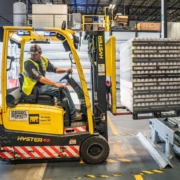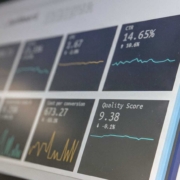7 steps to get your returns logistics in order
How do you get a grip on your returns logistics, which mainly excels in complexity and opacity. 7 advices to get you started.
Return logistics and its processes have been a bottleneck for many organizations for years. There are also hardly any standard processes or best practices available.
The diversity of returns, so that the handling always differs significantly, makes it an almost elusive process. Regardless of whether you are an OEM, retailer, distributor or logistics service provider, good return logistics offer many benefits in many ways, benefiting both your organization and your customers.
The 7 steps below will put you on the right track to significantly improve your return logistics, its processes and your operation.
1) Central control.
Returns often involve many people from different departments, spread over many geographic locations and from different companies. Because the returns actually swim against your ‘natural’ supply chain flow [the well-known salmon], it is a strange one. Ensuring central control over the entire chain is an elementary step towards effectively controlling your return flow.
2) Appoint a responsible person
The fact that many are involved but nobody is responsible throughout the chain results in the well-known ‘not my problem’ attitude. It’s always someone else’s problem. Your customers are the most affected by this because they feel sent from box to wall. By ensuring a Sr responsible with the right budget, you can oversee the entire return logistics and manage it better. In addition, this Senior can direct the process of continuous improvement and ensure further optimizations.
3) Develop lean processes
The turnaround time of returns is often low and unstable. The complexity of returns and their diversity results in multi-process transactions that can be poorly tracked and documented by many ERP systems. Customization is often necessary in order to get some guidance in the ERP process. Badly served customers will affect your Brand and continuously flood your organization with demands, which will slow down your process even more. Well-organized processes ensure a quick response to the customer and in this way contribute to the highest possible value for your customer and organization.
4) Integrated processes.
Problems often arise when the returns are transferred [physically or digitally] from one group / organization to another. Certainly if external parties are involved, people quickly lose sight of it and it is no longer possible to make clear to the customer what the status quo is. Your processes and systems must be linked end-to-end so that the status of the returns can be viewed at the touch of a button and where necessary, intervention can be made. By integrating and streamlining processes, you reduce errors and delays in the process.
5) Garbage in, Garbage out.
Widely known, but still a problem for many organizations. Ensure good quality input, the correct metrices and reports. Monitor your audit trail along the entire chain to maintain insight and detect errors in time. In addition, this contributes to measuring your return performance.
6) Transparency.
Tracking the status of returns if there is no integration and harmonization of processes and data makes tracking returns almost impossible. Your organization must be able to provide direct answers to the location and status of the returns during customer contact. This also applies to any financial settlement of returns.
7) Continuous improvement.
A lot of return logistics hang in a daily fire-fighting process. This wastes a lot of time and money on keeping the process up and running. Analyze your returns flow and your fires, and you will see that many fires contain a pattern. You can automate or accommodate this in an improved process design. Avoid the fires and provide structural solutions.
Closing.
Control your organization instead of your processes. Well-organized processes serviced by qualified and trained personnel maintain themselves without management having to intervene in the process every day to avoid worse. A good working process, good data and reports that contribute to the continuous improvement of your organization, ensure a significant reduction in the cost of your returns and a sharp increase in your customer retention.









